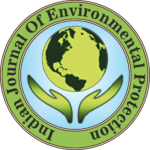IJEP 42(2): 249-256 : Vol. 42 Issue. 2 (February 2022)
Deswyn G. Marbaniang*
Lady Keane College, Department of Chemistry, Shillong – 793 001, Meghalaya, India
Abstract
Shillong city is ever-expanding in all directions leading to population increase and increased utilization of the natural resources, especially the water resource available. To meet the daily requirement of water for domestic as well as commercial demand, the people of Shillong city are increasingly turning their attention to the underground aquifers. However, the water, that is being pumped out is many times being utilized without proper knowledge of its physico-chemical and bacteriological properties. Ignorant on this matter will put the user in a situation where his health may be compromised. This work was initiated with the sole purpose to understand the baseline concentration of different physical, chemical and bacteriological parameters of the groundwater available in and around Shillong city. Thirty-five (35) sampling locations were identified and sampled for three different seasons (winter, pre-monsoon and post-monsoon). The significant observation in this study is that there is a spatial and seasonal variation of all the parameters selected. Concerning pH, iron and total coliform, the majority of the samples reported values that are higher than the prescribed limit for drinking water.
Keywords
Physical, Bacteriological, Chemical, Groundwater, Investigation
References
- USGS. 2014. United States Geological Survey. Available at : https://pubs.usgs.gov/.
- Shivasharanappa, P. S. and M.S. Huggi. 2011. Assessment of goundwater quality characteristics and water quality. Int. J. Env. Sci., 2(2):965-976.
- Momodu, M. and C.A. Anyakora. 2010. Heavy metal contamination of groundwater : The Surulere case study. Res. J. Env. Earth Sci., 2(1): 39-43.
- Dhania, G. and K. Rani. 2014. Impact of urbanization on groundwater pollution – An emerging problem. J. Int. Academic Res. Multidisciplinary. 2(9):123-133.
- Soni, N. and A. Bhatia. 2015. Analysis of quality of drinking water or private bore-well and piped water. Res. J. Recent Sci., 4:313-316.
- Muller, B.A., et al. 2001. Residential water source and the risk of childhood brain tumors. Int. Health Perspec., 109(6):551-556.
- Lenntech. Iron in groundwater. Available at: https://www. lenntech.com/groundwater/iron.htm.
- Hydrology project. 1999. Standard analytical procedures for water analysis. Government of India and Government of the Netherlands.
- Karunakaran, K., P. Thamilarasu and P. Sharmila. 2009. Statistical study of physico-chemical char-acteristics of groundwater in and around Namakkal, Tamil Nadu, India. J. Chem. DOI:10.1155/2009/290720.
- WHO. 1993. Guidelines for drinking water quality. World Health Organization, Geneva, Switzerland.
- Jain, S. and M. Agarwal. 2012. Study on physico-chemical characteristics of groundwater of various villages around Raisar. J. Chem. Biol. Physical Sci., 2(3):1551-1555.
- Tripathi, B.D., R.K. Dwivedi and A. Tripathi. 1989. Influences of industrial wastes on physico-chemical properties of soil and germination and mineral composition of wheat. Water Air Soil Poll., 49: 107-112.
- Rai, H. and G. Hill. 1978. Bacteriological studies on Amazonans, Mississippi and Nile waters. Archeol. Hydro-biol., 81(4):445-461.
- Mahananda, M.R., B.P. Mohanti and N.R. Behera. 2016. Physico-chemical analysis of surface and ground-water of Bargarh district, Orissa, India. Int. J. Recent Res. Appl. Studies. 2(3): 284-302.
- Moyle, J.B. 1946. Some indices of lake productivity. Transaction American Fisheries Society. 76: 322-334.
- WHO. 2003. Iron in drinking water. World Health Organization, Geneva.
- WHO. 2011. Nitrate and nitrite in drinking water. World Health Organization, Geneva.
